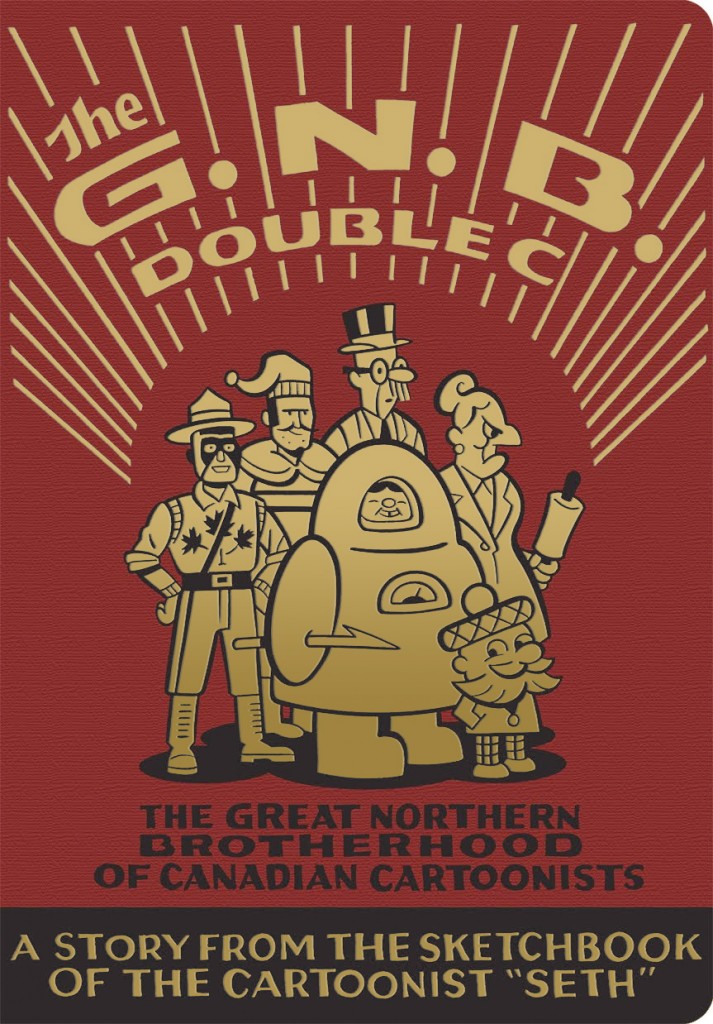Seth interview (2011)
October 21, 2011 | Interviews

Collecting a $10,000 prize cheque is always sweet.
Being publicly acknowledged for having “substantially contributed to the state of literature and books in Canada” may be even sweeter — especially considering the winner of the 2011 Harbourfront Festival Prize is the first cartoonist to ever claim the honour.
Seth, whose award-winning and critically acclaimed work includes the classic graphic novels, It’s a Good Life, If You Don’t Weaken and George Sprott, said the prize, which he’ll be awarded on the closing night of the International Festival of Authors, offers a measure of validation to his chosen medium.
“It’s a pretty clear sign that graphic novels or comic books have actually reached a point where they can be judged on their content rather than on their media,” the 49-year-old told the Toronto Star from New York City.
He’ll be back in Toronto for his onstage appearance on opening night of the IFOA Friday, in conversation with fellow cartoonist Daniel Clowes on the opening night of the IFOA.
“I think it’s another stepping stone in seeing the graphic novel accepted as just another form of writing.”
The shift in perception that culminated in being awarded the Harbourfront Festival Prize certainly didn’t happen overnight, Seth noted.
“(Art Spiegelman’s) Maus came along in the late 80s and it was a book that got a lot of attention, a great book, won the Pulitzer Prize, etc., etc., but really anyone who decided ‘Alright, I’m going to read graphic novels,’ there probably wasn’t a lot of work they could turn to,” he said.
“Back in the 80s, you had to sell your work in the comic shops and it was palpable, the disinterest that people had for the kind of work we were doing.”
But alongside cartooning stalwarts like Clowes, Chester Brown, Joe Matt, Charles Burns, Jaime and Gilbert Hernandez, Chris Ware, Craig Thompson and countless others, Seth continued to chip away at the preconceptions of graphic storytelling.
“I think the real change is that over a 20-year period, there’s been kind of a slow building of a beachhead of cartoonists that are working toward the same goal, which is to use the comic book medium just as a form of writing like any other kind of literature — to break away from the usual genre concerns of fantasy and the typical subject matter that comic books have always had,” he said.
“As each year passes, another cartoonist comes along who produces a significant work and we’ve finally reached a point where there’s probably a whole bookshelf or two of actually good graphic novels that an adult reader could (enjoy).”
The subject of camaraderie in cartooning hits close to home for Seth, whose new graphic novel, The Great Northern Brotherhood of Canadian Cartoonists, revolves around a club for the likes of him — though he admits it’s not the kind of association he’d like to be part of.
“The truth is, you get together a whole bunch of cartoonists and it’s kind of like having a perpetual comic book convention — which is not something I want be part of,” said the former Toronto resident and OCAD grad, who now resides in Guelph, Ont.
Like Seth’s previous homage to comics and collecting, Wimbledon Green, his latest book began as a sketchbook exercise.
“You start on page one with a quickly thought up idea and then just start going and I think that’s the kind of stuff that comes right out of the information that floats around the front of your brain,” he said.
“For me, probably the first topics I would turn to for anything would be collectors or comic books. The history of cartooning, other cartoonists — it’s like right there on the edge of my consciousness.”
Next up, Seth said, is finishing his long-running story Clyde Fans, along with his ongoing design work on The Complete Peanuts and on a second volume of The Collected Doug Wright, highlighting the life and work of the Canadian cartooning icon.
Seth also extended his design repertoire to include creating logos for Guelph’s roller derby club, the Royal City Rollergirls, crafting distinctive looks for squads like Our Ladies of Pain, Violet Uprising and the Killer Queens.
“Basically I got involved because my wife joined the team,” he said. “She thought it would be fun to try out and they needed a crest.
“At first, it was just something I was doing to make my wife happy, but after I went to a few games, I really liked it so I’m quite pleased to be involved.”
(This article was first published in the Toronto Star)

You must be logged in to post a comment.